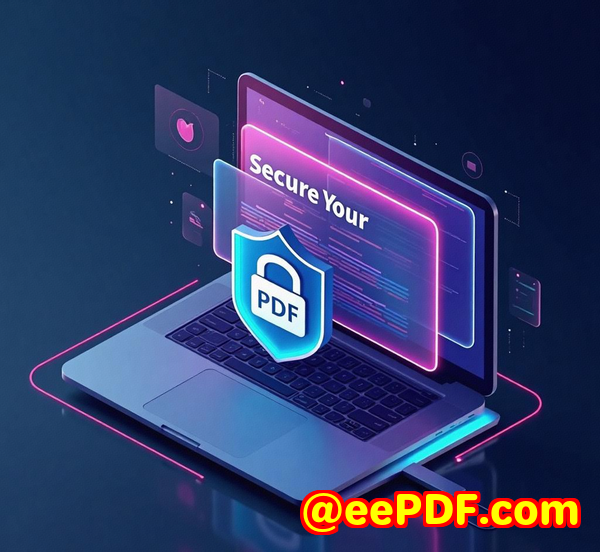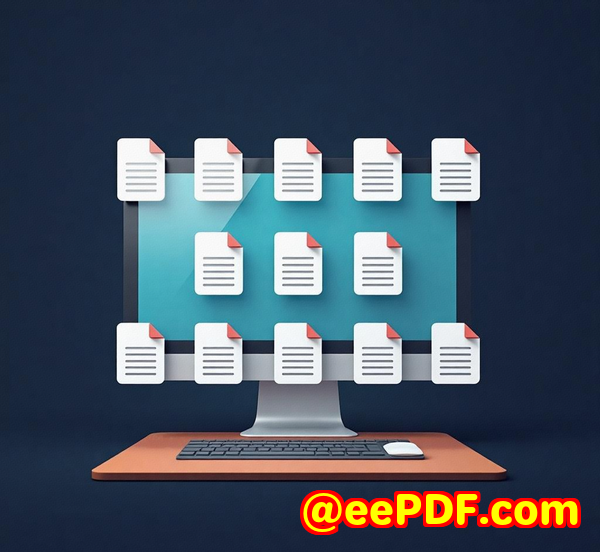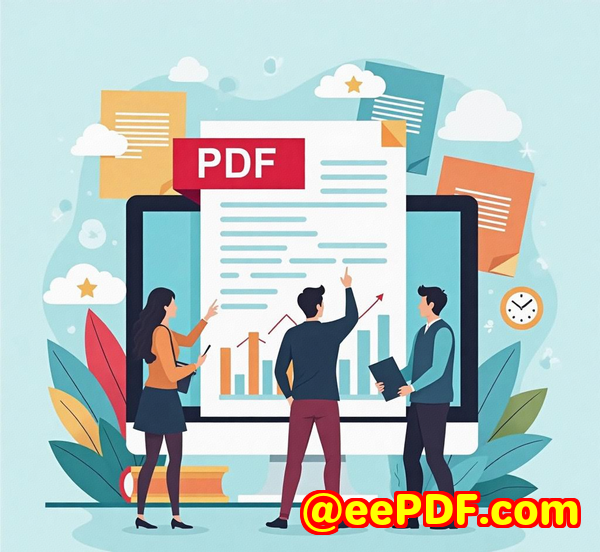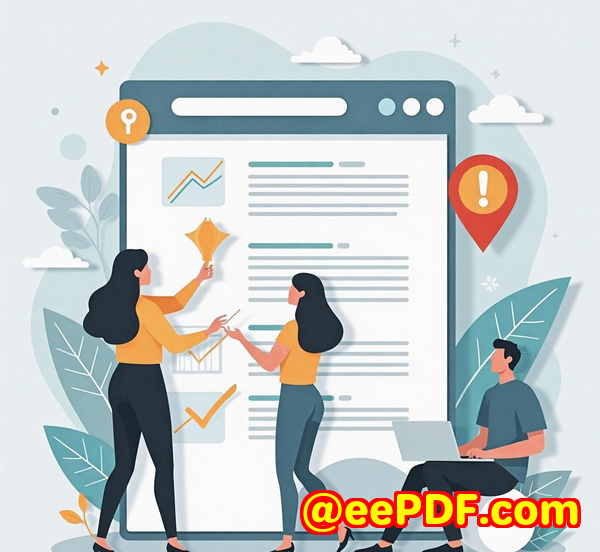How to Integrate VeryDOC PDF to PDFA SDK with Your Existing Document Workflow
How to Integrate VeryDOC PDF to PDF/A SDK with Your Existing Document Workflow
When you're dealing with a flood of documents, keeping everything in perfect order is a real challenge. Especially when it comes to archiving. If you're like me, you've probably lost valuable time trying to make sure that all those PDFs are stored in the most reliable and future-proof way. Enter PDF/A. If you're not familiar with it, PDF/A is a standard for archiving PDFs in such a way that they remain accessible and reproducible far down the line.
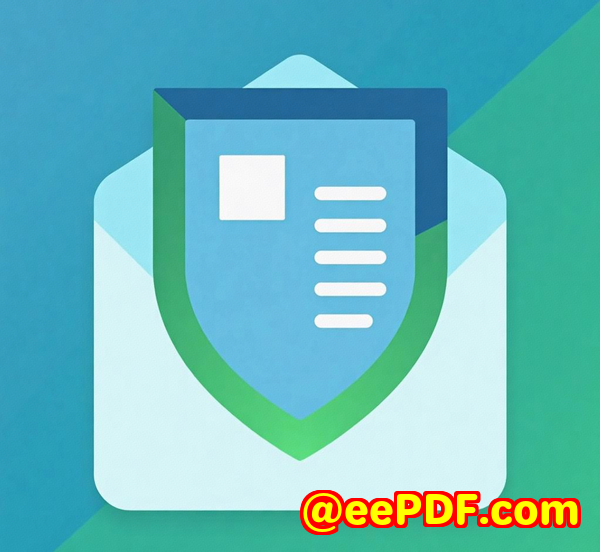
But here's the thing: not all PDFs are PDF/A-compliant right out of the box. That's where VeryDOC's PDF to PDF/A Converter Command Line SDK comes in. In this blog, I'll walk you through how to integrate this tool into your document management workflow. Trust me, once I started using it, everything became smoother, more reliable, and I could finally get rid of the headaches of manually converting PDFs.
Why You Should Care About PDF/A
So, why should you care about PDF/A? Well, think of it this way: you might be saving a document today, but will it be usable 10, 20, or even 50 years from now? As time goes on, software and hardware will change. New versions of Acrobat will roll out, but that old PDF might not display correctlyor even openon future systems. PDF/A is designed to keep your documents usable in the long run, regardless of technological shifts.
I realized this when I had to convert a pile of legal documents. I needed to ensure that they would always display the same way, even decades later. That's when I found out about VeryDOC PDF to PDF/A Converter Command Line SDK, which automates the entire process. No more manual tweaking or worrying about missing fonts or unsupported features.
The Power of the VeryDOC PDF to PDF/A Converter
Let me break down the core features that made me fall in love with this tool:
1. Easy Command-Line Operation
This tool is all about simplicity. Using command-line inputs, I can convert multiple PDFs to PDF/A with just a few commands. You can even create batch scripts to automate conversions, which is a massive time-saver if you're dealing with large volumes of documents.
Here's how easy it is to use:
This one command converts a PDF file into a PDF/A-compliant file, ready for long-term archiving. And yes, it works on both 32-bit and 64-bit versions of Windows, from Windows 2000 to the latest versions.
2. PDF/A-1b Compliant Files
The SDK ensures that your converted files are compliant with ISO 19005-1, which means they meet the strict standards for document archiving. This was a game-changer for me since I needed to ensure compliance with archival standards for legal documents. It also helped me avoid the pitfalls of using non-compliant tools that fail to guarantee long-term preservation.
3. Font Embedding & Color Management
Fonts are a big deal when it comes to PDFs. If the fonts aren't embedded, the document might not render properly on another machine. VeryDOC makes sure all fonts are embedded and optimized. Even non-embedded fonts are handled by the SDK, which means no more ugly rendering issues.
Another cool feature is the ability to replace device-specific color spaces with ICC profiles, ensuring consistent colour reproduction across platforms. This is crucial for professional documents where color accuracy matters.
4. Quick and Efficient Conversions
The SDK supports multiple modes of conversion, so you can either do a quick conversion for simple documents or dive into more specific modes if you need precision. For example:
This allows you to adjust the output according to your exact needs.
5. Remove Prohibited Content
Sometimes, PDFs come with content that isn't allowed in archived documents, such as JavaScript or interactive forms. The VeryDOC tool takes care of this by automatically stripping these elements, ensuring that the final file is compliant with PDF/A standards.
Real-Life Scenarios Where This SDK Shines
You might be wondering where this tool is useful. Let me tell you about some of the scenarios where it really saved my day:
Legal Firms & Compliance
If you work in a legal firm, you know how crucial it is to keep records intact and secure. We had a bunch of contracts that had to be archived for future reference. Instead of manually going through each one to check compliance, I used the VeryDOC PDF to PDF/A Converter to automatically convert dozens of scanned contracts into compliant PDF/A files. This saved me countless hours of work.
Government & Public Sector
Governments around the world need to store documents in a way that ensures accessibility far into the future. This tool is ideal for converting public records, laws, and regulations into PDF/A format for permanent archiving. The tool's compliance with ISO 19005-1 means that these records will remain accessible and usable long after today's systems are obsolete.
Publishing and Documentation
For publishing houses, ensuring that all books and research papers are stored in a way that maintains their integrity and format is critical. This SDK ensures that PDFs of books, research papers, and more can be converted into a format that will stand the test of time. When I had to archive a research paper collection, this tool took care of the conversion automaticallyno more worrying about font issues or unsupported file features.
Why Choose VeryDOC?
You might be asking, "Why not just use some free online converter?" Here's the thing: free tools often miss the mark when it comes to compliance. They're either too limited or don't offer the necessary features like font embedding, color space management, or metadata support.
On the other hand, VeryDOC brings a level of professionalism and precision to the table that other tools just can't match. It's reliable, fast, and incredibly easy to use. Plus, it supports batch operations and command-line automation, which means I can get through large volumes of documents without breaking a sweat.
My Personal Experience with VeryDOC PDF to PDF/A Converter
I have to admit, I was a little skeptical at first. I'd tried other tools before, and they often failed to meet my needs. But the VeryDOC PDF to PDF/A Converter Command Line SDK proved me wrong.
It was a game-changer for my workflow. I didn't have to manually inspect every document anymore. I simply ran a batch script, and the tool did the rest. Whether it was cleaning up an old legal contract or converting a stack of scanned PDFs into compliant documents, this tool handled it all with ease.
The real kicker? The speed. The quick conversion mode saved me hours on larger projects. I could focus on the more important aspects of my work, knowing that my documents were being handled and archived properly.
Conclusion: Should You Give It a Try?
If you're looking for a way to make sure your PDFs are properly archived and will remain usable well into the future, I highly recommend VeryDOC PDF to PDF/A Converter Command Line SDK. It's a tool that's saved me time and frustration, and I'm sure it will do the same for you. Whether you're working with legal documents, government records, or research papers, this tool makes PDF/A conversion as easy as it gets.
Click here to try it out for yourself: VeryDOC PDF to PDF/A Converter
Custom Development Services by VeryDOC
If you need custom PDF solutions tailored to your unique workflow, VeryDOC has got you covered. They offer extensive development services for a range of platforms, including Windows, macOS, Linux, iOS, Android, and more. From PDF processing to document security, their expertise spans a wide array of technologies and use cases.
Their team is capable of handling everything from creating custom PDF utilities to building cloud-based document management systems. If you're looking for a solution to meet specific business needs, don't hesitate to reach out to VeryDOC's support team for a consultation.
FAQs
Q: What is PDF/A?
A: PDF/A is a standard for archiving PDF documents. It ensures that a document is stored in a way that preserves its appearance and content over the long term.
Q: Can I convert password-protected PDFs with the VeryDOC SDK?
A: Yes, the SDK supports password-protected PDFs, so you can convert them without issues.
Q: Does the SDK support batch conversions?
A: Absolutely. The command-line nature of the tool makes it perfect for batch operations.
Q: Can I customize the conversion process?
A: Yes, you can adjust the conversion mode and color profile, as well as other parameters like metadata, to fit your needs.
Q: Is the SDK compatible with older versions of Windows?
A: Yes, the SDK supports versions of Windows from 2000 onwards, including 32-bit and 64-bit versions.
Q: Can I try the SDK before purchasing?
A: Yes, you can visit the official website and start your trial to see how the tool fits into your workflow.
Tags or Keywords
-
PDF/A conversion
-
PDF to PDF/A SDK
-
PDF archiving tool
-
Convert PDF to PDF/A
-
Document workflow automation
